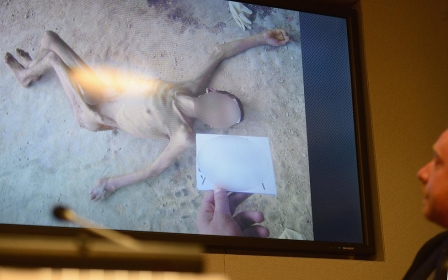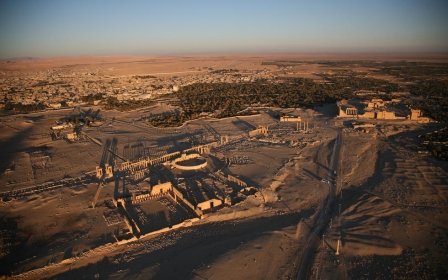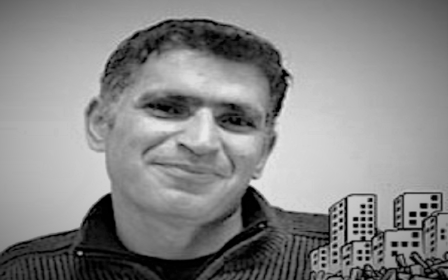Syrian government has starved, tortured and executed thousands: HRW

A human rights group has released "damning evidence" that it says proves the Syrian government has systematically starved, tortured and executed possibly thousands of prisoners during the civil war.
Human Rights Watch said analysis, identification and verification of 27 victims among a mass collection of photographs leaked last year provided "authentic" evidence of crimes against humanity committed by the Syrian government.
The analysis, released on Wednesday, was based on images from a cache of more than 50,000 photographs smuggled out of Syria by a military defector codenamed "Caesar".
Caesar was a forensic photographer for the Syrian military police, who photographed bodies of dead prisoners and helped archive thousands more before he defected in August 2013.
The pictures in Caesar's cache show the bodies of some 6,000 prisoners - often bearing marks of torture or starvation - who allegedly died in prison or after being transferred to military hospitals.
Nadim Houry, HRW's deputy Middle East director, said that their new report confirmed their veracity.
"We have meticulously verified dozens of stories, and we are confident the Caesar photographs present authentic - and damning - evidence of crimes against humanity in Syria," he said.
"These photographs show peoples' children, their husbands, their beloved family members, and friends that they spent months or years searching for," Houry said.
“We have no doubt that the people shown in the Caesar photographs were starved, beaten, and tortured in a systematic way, and on a massive scale.”
Caesar has admitted that he did not know the reason behind photographing the bodies but concluded that “the regime documents everything so that it will forget nothing. Therefore, it documents these deaths. If one day the judges have to reopen cases, they’ll need them.”
According to Human Rights Watch, some of the deaths have been unmistakeably traced back to five prisons and two state hospitals around Damascus, which have been the centre point of extensive claims of abuse and murder.
Out of thousands of photos, HRW researchers identified 27 individuals and collected accounts from friends, families and fellow detainees to piece together their stories.
Forensic pathologists studied each case by examining multiple photographs of the victims. Evidence was found of starvation, blunt force trauma, wound infection, and in one case a gunshot to the head.
The watchdog said one of the victims, 14 year-old Ahmad al-Musalmani, died in government custody after being arrested for having an anti-regime song on his phone in 2012.
Ahmad's uncle, Dahi al-Musalmani, spent years trying to find his nephew as well as more than $14,000 in bribes to secure his release.
Dahi finally identified his nephew in Caesar's photographs.
"I went directly to the folder of the Air Force Intelligence, and I found him," he told HRW, breaking down while talking.
"It was a shock. Oh, it was the shock of my life to see him here. I looked for him, 950 days I looked for him. I counted each day. When his mother was dying, she told me: 'I leave him under your protection.' What protection could I give?"
HRW called on countries seeking peace talks on Syria's crisis to prioritise the release of thousands of prisoners.
It said Russia and Iran, as the top backers of Syrian President Bashar al-Assad, have a "particular responsibility" to secure immediate access to detention centres for international monitors.
"The government registered these deaths, processing dozens of bodies at a time, while taking no action to investigate the cause of death or to prevent yet more people in their custody from dying," Houry said.
"Those pushing for peace in Syria should ensure that these crimes stop and that the people who oversaw this system ultimately face accountability for their crimes."
Syrian President Bashar al-Assad has previously dismissed claims that mass imprisonment or torture have taken place.
“You can bring photographs from anyone and say this is torture,” he said during an interview with Foreign Affairs in January 2015. “There is no verification of any of this evidence, so it’s all allegations without evidence."
Middle East Eye propose une couverture et une analyse indépendantes et incomparables du Moyen-Orient, de l’Afrique du Nord et d’autres régions du monde. Pour en savoir plus sur la reprise de ce contenu et les frais qui s’appliquent, veuillez remplir ce formulaire [en anglais]. Pour en savoir plus sur MEE, cliquez ici [en anglais].




